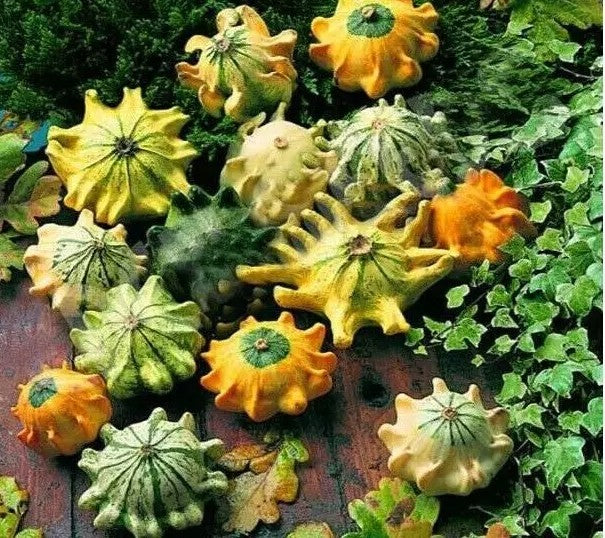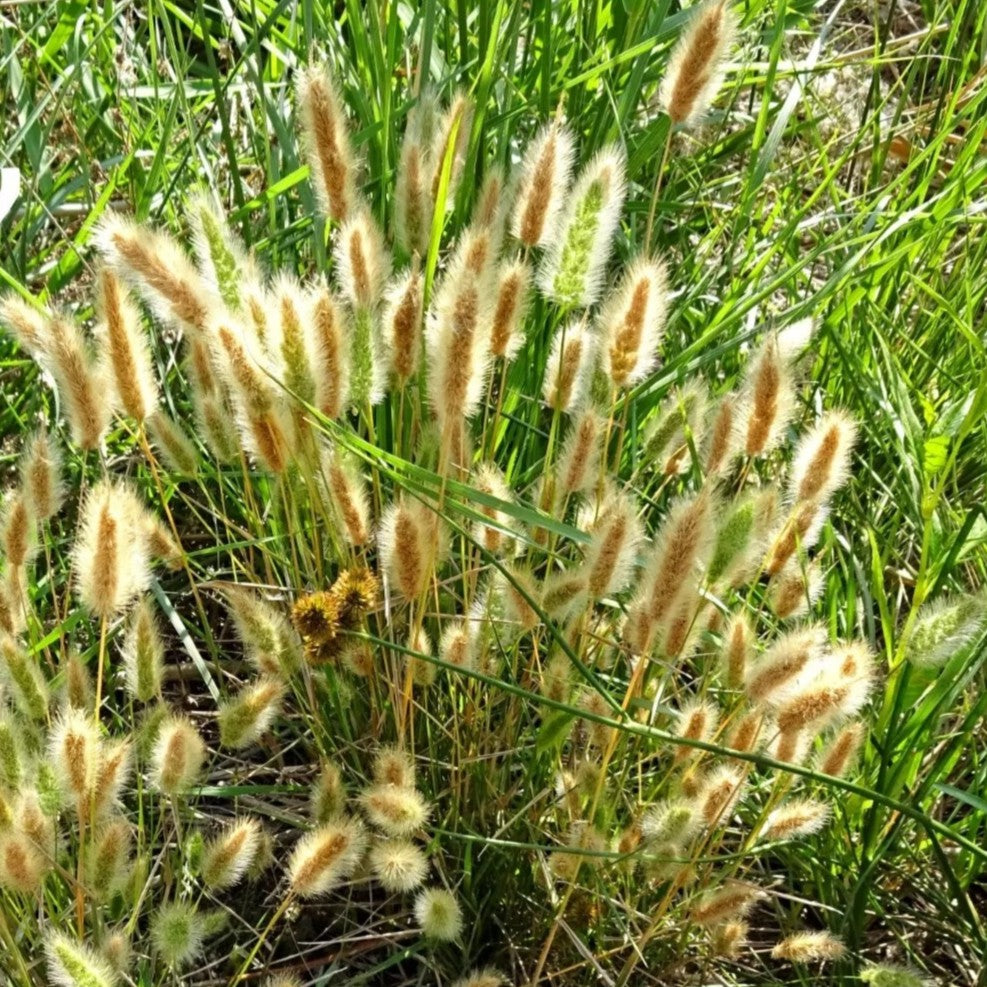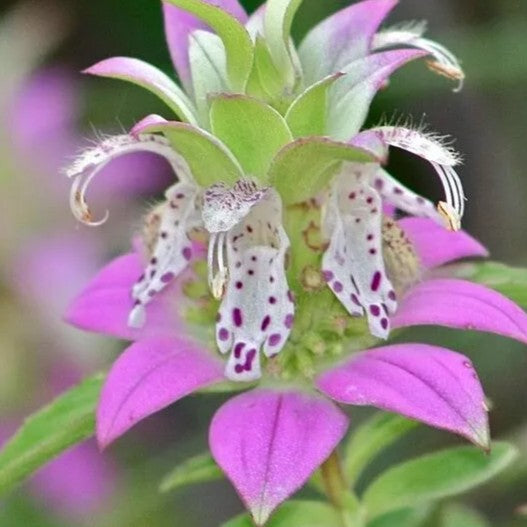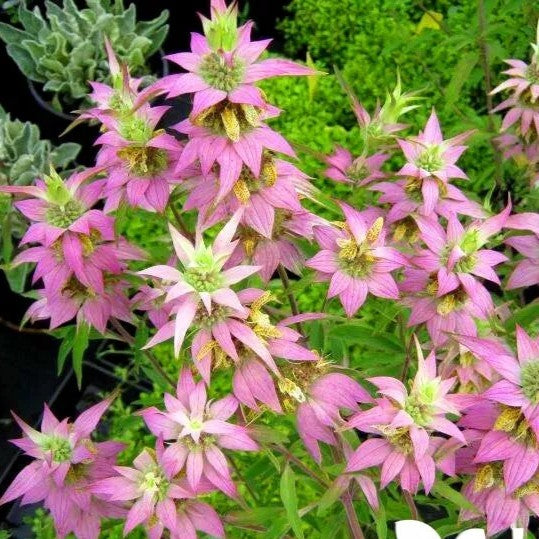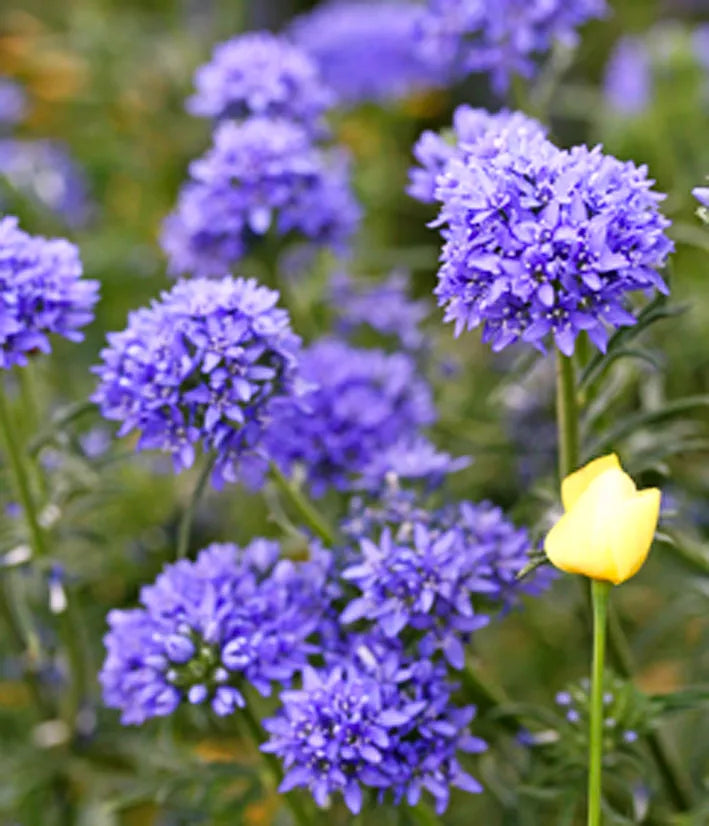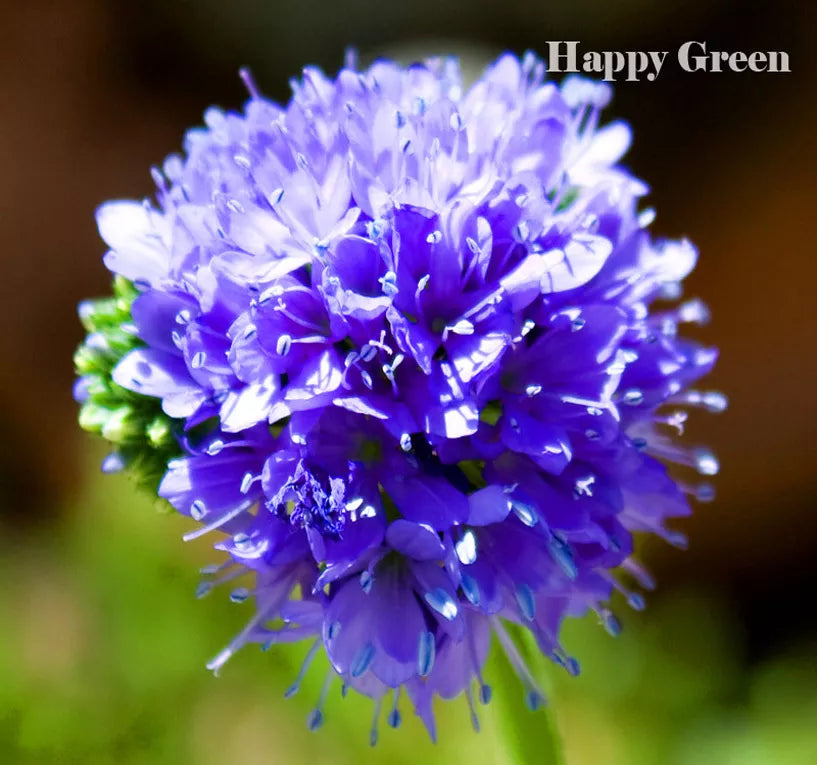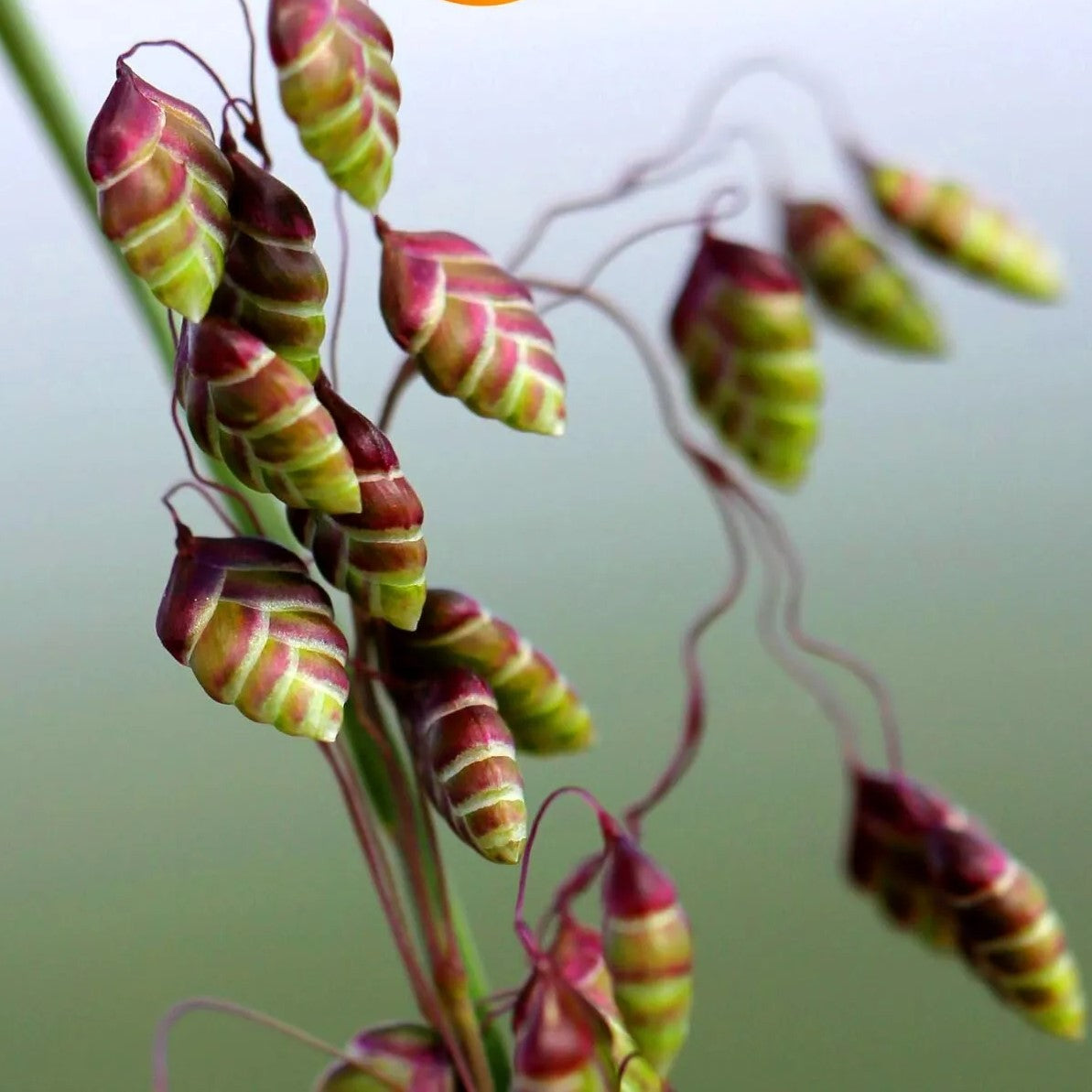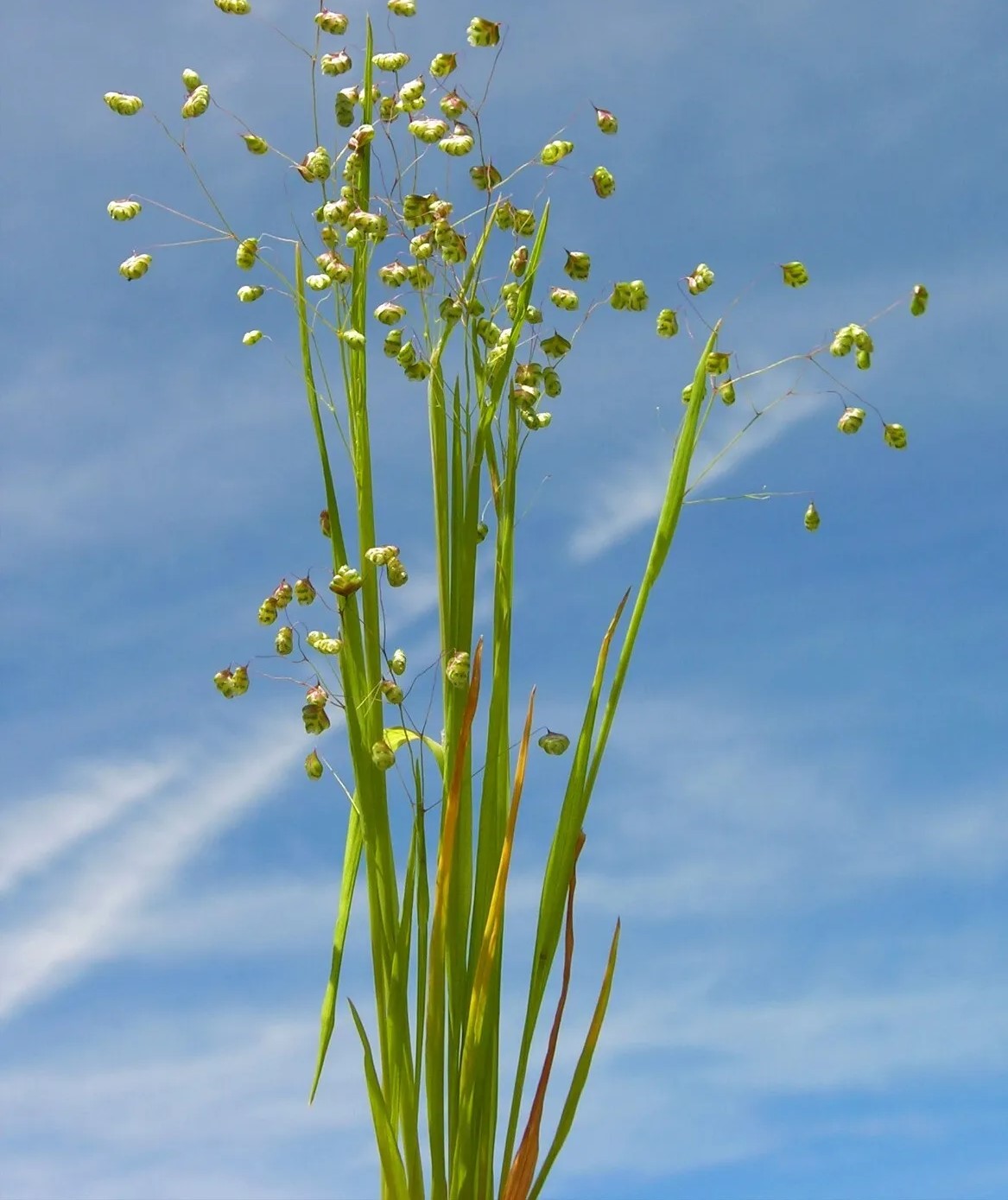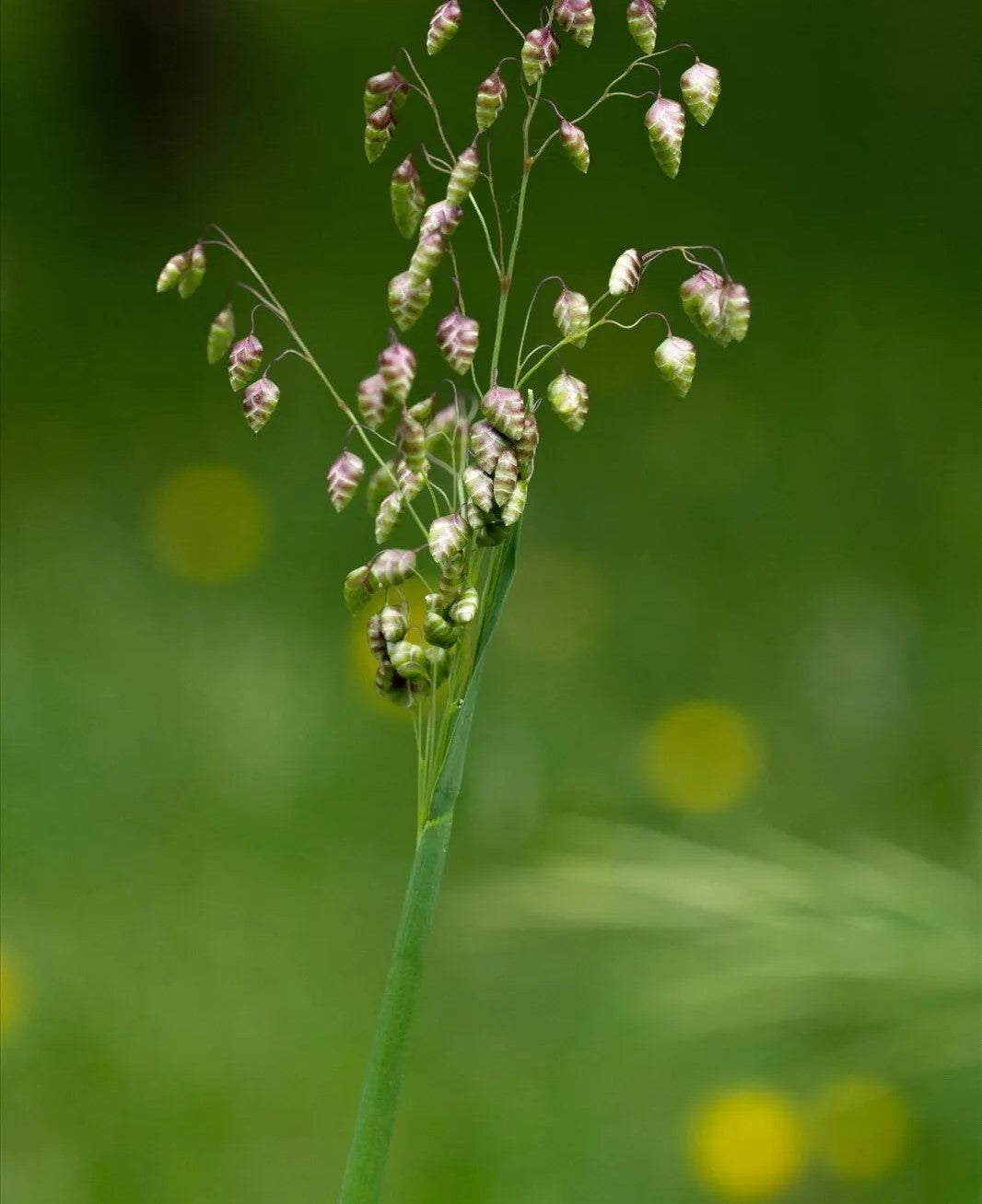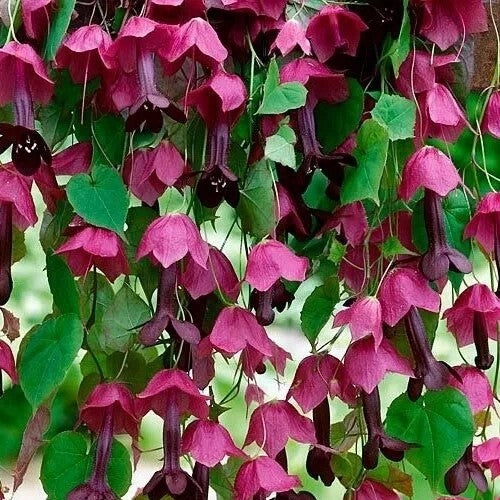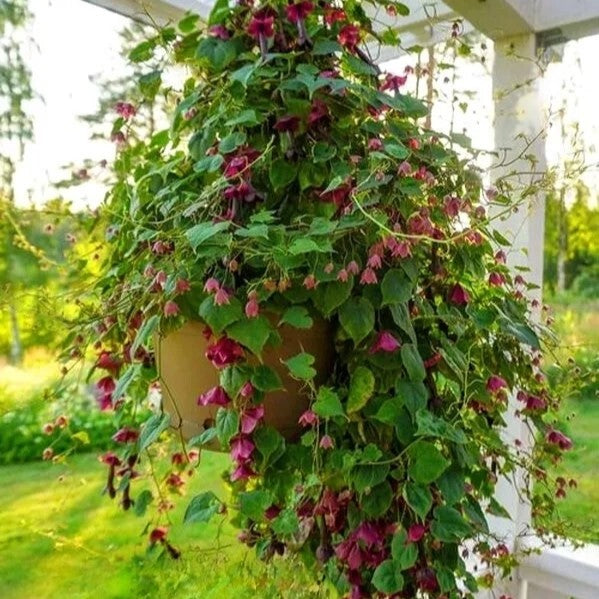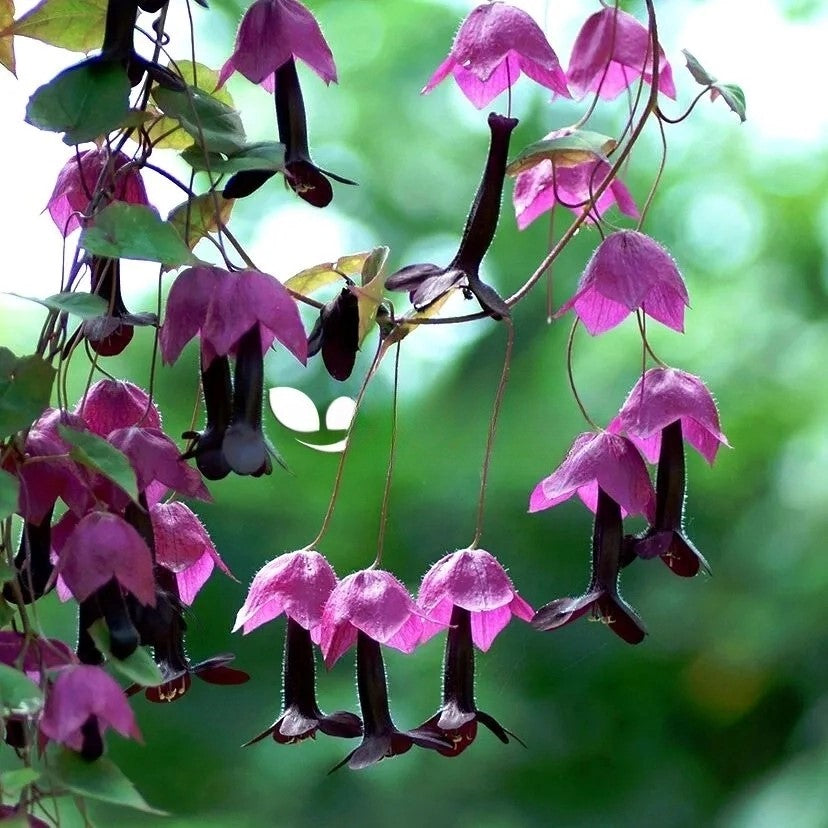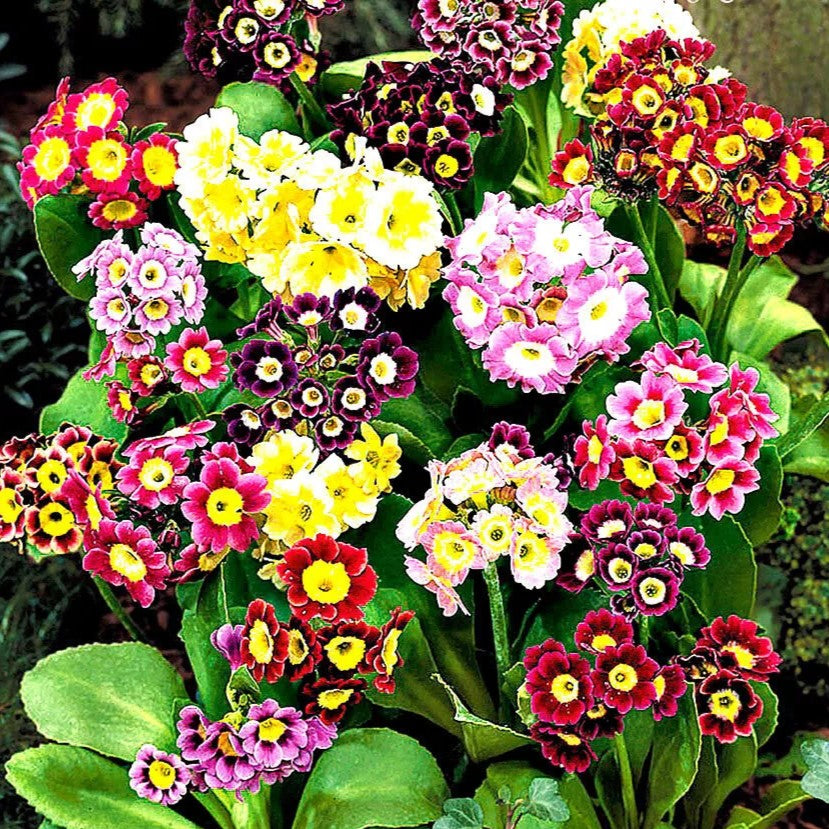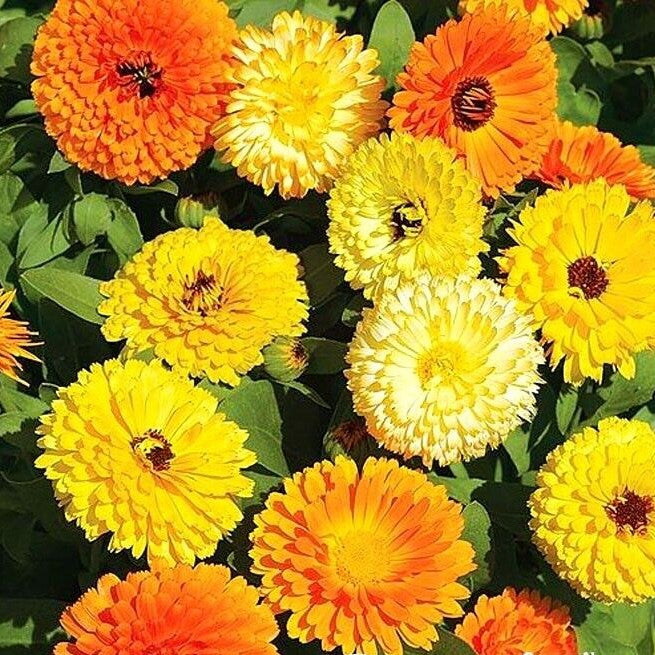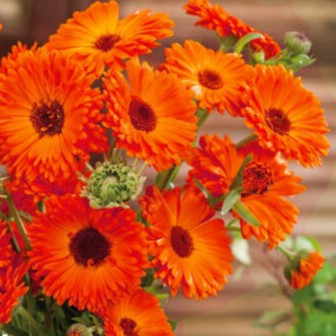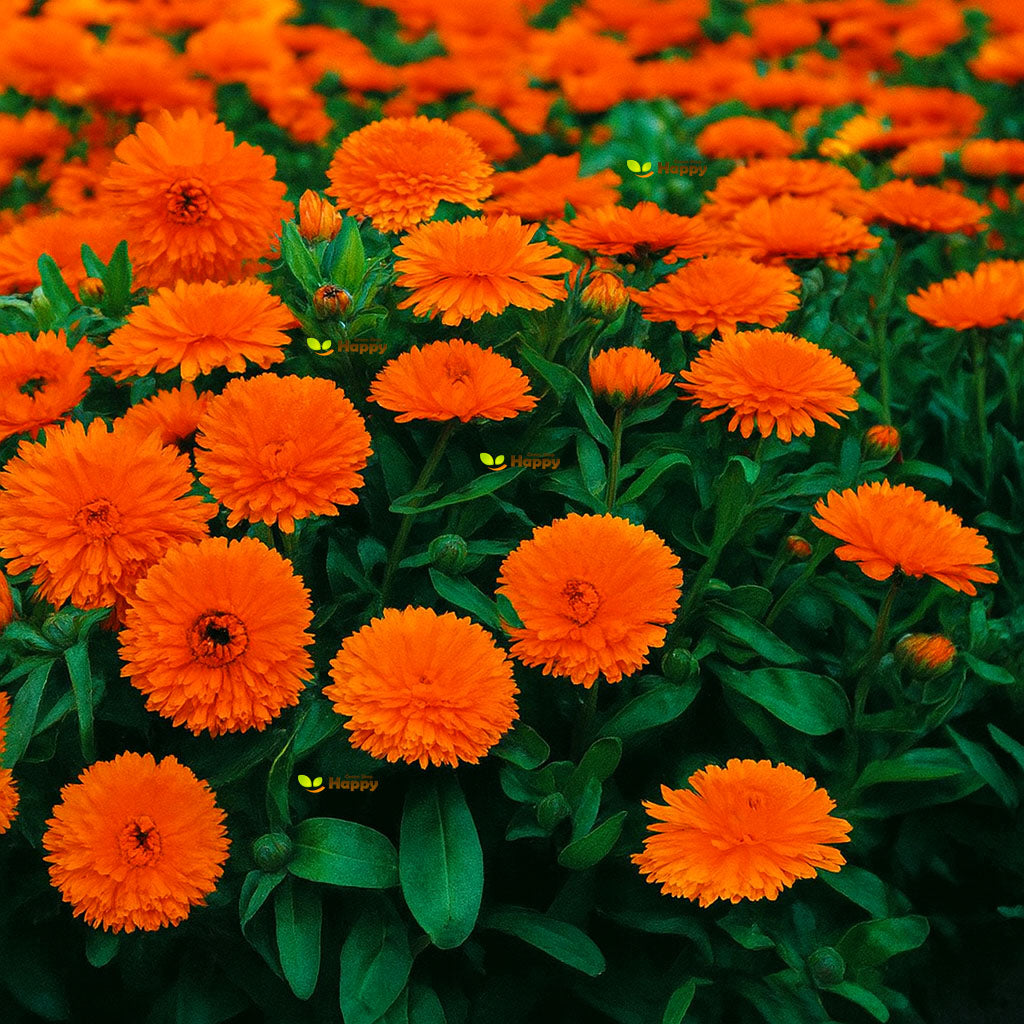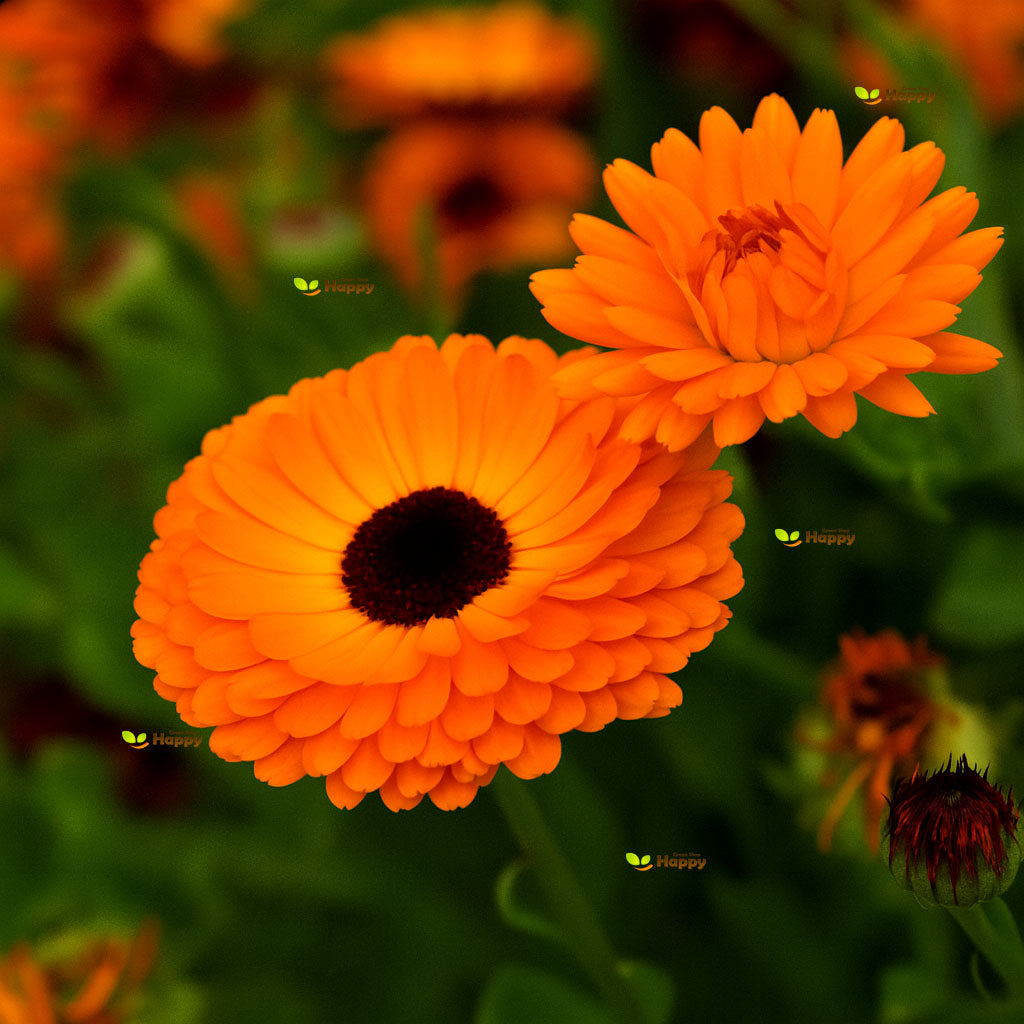Sort by:
435 products
435 products
Rabbit’s Foot Grass Seeds – Polypogon monspeliensis
Add a touch of softness and movement to your garden with Rabbit’s Foot Grass (Polypogon monspeliensis). This annual ornamental grass produces charming, fluffy flower heads resembling rabbit’s feet, swaying gracefully in the breeze. Perfect for borders, containers, or dried arrangements, it’s a unique addition to any garden design.
How to Grow
-
Sow directly outdoors in spring after the last frost or start indoors earlier.
-
Use well-drained soil in a sunny to partially shaded location.
-
Lightly press seeds into the soil without covering deeply.
-
Keep soil moist until germination, usually within 7–14 days.
-
Thin seedlings as they grow to allow good air circulation.
-
Harvest flower heads for drying when they are fully developed.
Key Features
-
Produces fluffy, rabbit-foot-like flower heads
-
Adds movement and texture to gardens and containers
-
Annual grass, fast and easy to grow
-
Excellent for dried flower arrangements and crafts
-
Attracts interest as a decorative garden accent
Ideal For
-
Cottage gardens and naturalistic plantings
-
Borders and flower beds
-
Containers and pots
-
Dried floral arrangements and bouquets
Sowing
-
Best time: Spring after frost
-
Germination time: 7–14 days
-
Sow thinly, lightly cover, and keep soil moist
-
Prefers full sun to partial shade
Quick Tip
-
For longer-lasting dried arrangements, cut flower heads just before they fully open and hang them upside down to dry.
Purplish Lilac Lemon Bee Balm Mint Seeds (Monarda punctata)
Bring a fragrant and colorful touch to your garden with Purplish Lilac Lemon Bee Balm Mint. This striking perennial produces spiky clusters of lilac-purple flowers with lemon-scented foliage, attracting bees, butterflies, and other pollinators. Easy to grow and drought-tolerant, it adds both beauty and ecological value to borders, beds, and wildflower gardens.
Why Grow "Purplish Lilac Lemon"
-
Unique lilac-purple flower spikes with lemon-scented foliage
-
Attracts pollinators like bees and butterflies
-
Drought-tolerant and easy to grow
-
Adds color and texture to borders, beds, and wildflower gardens
Key Features
-
Type: Perennial (Monarda punctata)
-
Height: 60–90 cm
-
Flowering: Summer (June–September)
-
Position: Full sun to partial shade
-
Uses: Borders, flower beds, pollinator gardens, containers
Sowing & Growing
-
Sow indoors: 6–8 weeks before the last frost
-
Sow outdoors: After frost danger has passed
-
Germination: 10–20 days
-
Space seedlings: 30–40 cm apart
-
Prefers well-drained soil and full sun for best flowering
Queen Anne’s Thimbles – Delicate Blue Blooms
Queen Anne’s Thimbles produces charming, compact clusters of pale blue flowers with a sweet, airy appearance. Perfect for borders, wildflower gardens, and pollinator-friendly spaces, these hardy annuals bring a touch of elegance to any garden.
What Makes It Special
-
Delicate, pale blue clustered flowers
-
Compact and airy growth habit
-
Long-flowering and easy to grow
-
Attracts bees and butterflies
Key Features
-
Annual plant
-
Grows 20–40 cm tall
-
Blooms from late spring to summer
-
Thrives in full sun and well-drained soil
-
Drought-tolerant and hardy
Ideal For
-
Garden borders and edges
-
Wildflower and meadow-style gardens
-
Pollinator-friendly gardens
-
Containers and cottage gardens
Sowing
-
Sow directly outdoors after last frost
-
Plant seeds 0.3–0.5 cm deep
-
Germination: 10–14 days at 18–22°C
-
Space 20–25 cm apart
-
Water moderately and provide full sun
Quaking Grass Seeds (Briza minor)
Quaking Grass is a delicate, annual ornamental grass with airy, heart-shaped seed heads that tremble and shimmer in the breeze. Its fine texture and graceful movement add charm to borders, wildflower meadows, and container plantings. Easy to grow, it also makes attractive cut or dried arrangements.
What Makes It Special
-
Light, quivering heart-shaped seed heads
-
Adds texture and movement to gardens
-
Excellent for cut flowers and dried arrangements
Key Features
-
Botanical name: Briza minor
-
Hardy annual
-
Height: 30–50 cm (12–20 in)
-
Bloom time: Summer
Ideal For
-
Cottage gardens, borders, and wildflower meadows
-
Containers and pots
-
Fresh or dried flower arrangements
Sowing
-
Sow outdoors Mar–May or Sep–Oct
-
Lightly press seeds into soil; do not cover heavily
-
Germination: 10–21 days at 15–20°C
-
Thin seedlings 15–20 cm apart
-
Flowers in the same year
Purple Bell Vine – Seeds (Rhodochiton atrosanguineus)
The Purple Bell Vine is a striking climber admired for its exotic, lantern-like flowers. Each bloom features a rosy-purple bell with deep, maroon-black tubular centers, hanging gracefully against lush green, heart-shaped foliage. Fast-growing and elegant, it adds a dramatic touch to arches, trellises, pergolas, or hanging baskets. Native to Mexico, this tender perennial is usually grown as an annual in cooler climates.
What Makes It Special
-
Unique pendant bell-shaped flowers with rich colors
-
Long flowering season from summer to autumn
-
Ideal for vertical gardens and decorative screening
-
Can also be grown in containers for patios and balconies
Key Features
-
Botanical name: Rhodochiton atrosanguineus
-
Common name: Purple Bell Vine, Purple Bell Flower
-
Seed count: Approx. seeds per pack
-
Height/Spread: Climbs 3–4 m with support
-
Position: Full sun or light partial shade; well-drained soil
-
Flowering period: June to October
Ideal For
-
Trellises, arches, and fences
-
Vertical garden displays
-
Patio containers and hanging baskets
-
Exotic or tropical-style gardens
Sowing Instructions
-
When to sow: Indoors February–April
-
How to sow:
-
Sow on the surface of moist seed compost, pressing gently without covering (light aids germination)
-
Keep at 18–22°C and germination takes 21–30 days
-
-
Transplanting: Pot on seedlings when large enough and harden off before planting outside after last frost
-
Care: Provide climbing support; water regularly and feed for abundant flowering
Primrose Auricula Mixed – Seeds (Primula auricula pubescens)
Primrose Auricula Mixed (Primula auricula pubescens) is a treasured perennial, admired for its velvety, jewel-toned flowers often edged with a delicate dusting of silver or white. These compact plants bloom in spring, bringing old-world charm to borders, rock gardens, and containers. Hardy and long-lived, auriculas also provide early nectar for bees and pollinators.
Why Grow "Auricula Mixed"
-
Striking mix of velvety, multi-colored blooms
-
Hardy perennial with compact growth
-
Flowers in spring, adding early garden color
-
A traditional favorite among gardeners and collectors
Key Features
-
Type: Perennial (Primula auricula pubescens)
-
Height: 15–25 cm
-
Flowering: April–June
-
Position: Sun to partial shade
-
Uses: Borders, rockeries, containers, collectors’ displays
Ideal For
-
Adding spring charm to borders and beds
-
Rock gardens and alpine plantings
-
Patio pots and containers
-
Collectors seeking unique and traditional varieties
Sowing & Growing
-
Sow indoors: January–March in trays of fine compost
-
Germination: 21–30 days at 15–18°C (may be slow and uneven)
-
Transplant seedlings to small pots when large enough
-
Plant out after frost, spacing 20 cm apart
-
Prefers moist but well-drained soil in light shade
Primrose 'Potsdam Giants' Mixed Seeds (Primula acaulis)
The Primrose 'Potsdam Giants' Mix produces large, brilliantly colored blooms in a wide range of shades, from sunny yellows and bright reds to deep purples and pure whites. These compact perennials flower early in the season, brightening borders, containers, and window boxes when few other plants are in bloom. Hardy and reliable, they return each spring with cheerful, long-lasting flowers.
What Makes It Special
-
Extra-large primrose blooms in a vibrant color mix
-
Early-flowering to brighten late winter and spring gardens
-
Compact, hardy plants perfect for beds and containers
Key Features
-
Botanical name: Primula acaulis 'Potsdam Giants'
-
Hardy perennial (often grown as biennial)
-
Height: 15–20 cm (6–8 in)
-
Bloom time: Late winter to spring
Ideal For
-
Early spring displays in borders and beds
-
Patio pots and window boxes
-
Brightening shaded garden areas
Sowing
-
Sow indoors Feb–Jun in trays; do not cover seeds heavily
-
Keep at 15–20°C; germination in 14–28 days
-
Transplant seedlings 15 cm apart
-
Flowers from the following spring
Pot Marigold 'Gitana Mix' – Seeds (Calendula officinalis)
Brighten up your garden with the charming Pot Marigold 'Gitana Mix'. This compact variety produces a vibrant blend of orange, yellow, and golden blooms that flower freely throughout summer. Perfect for borders, pots, or cottage-style gardens, these cheerful marigolds are also edible and can be used to decorate salads and dishes.
What Makes It Special
-
Compact, dwarf variety with nonstop blooms
-
A mix of warm, sunny colors that light up the garden
-
Dual-purpose: ornamental beauty and edible petals
Key Features
-
Height: 20–30 cm
-
Annual, bushy habit
-
Flowers: summer through autumn
-
Easy to grow and low maintenance
Ideal For
-
Bedding, borders, and cottage gardens
-
Pots and containers
-
Cutting gardens and edible flower use
Sowing
-
Sow outdoors Mar–May in well-drained soil, full sun
-
Lightly cover seeds with fine soil
-
Germination: 7–14 days
-
Thin seedlings to 20 cm apart
Pot Marigold ‘Geisha Girl’ Seeds (Calendula officinalis)
A charming and easy-to-grow annual, Pot Marigold ‘Geisha Girl’ produces bright, double orange blooms with a cheerful, ruffled appearance. Hardy and long-flowering, this variety is perfect for borders, containers, and edible gardens, attracting pollinators while adding vibrant color from spring through autumn.
What Makes It Special
-
Double, ruffled orange blooms with a striking presence
-
Hardy and low-maintenance, ideal for novice gardeners
-
Attracts bees and butterflies, supports pollinator-friendly gardens
Key Features
-
Botanical name: Calendula officinalis
-
Hardy annual
-
Height: 30–40 cm (12–16 in)
-
Bloom time: Spring to autumn
Ideal For
-
Borders, beds, and edging
-
Containers, pots, and window boxes
-
Pollinator-friendly and edible gardens
Sowing
-
Sow indoors Feb–Apr or outdoors Mar–May
-
Cover lightly with soil and keep moist
-
Germination: 7–14 days at 15–20°C
-
Thin seedlings to 25–30 cm apart
-
Flowers the same year after sowing
Showing 108/435




